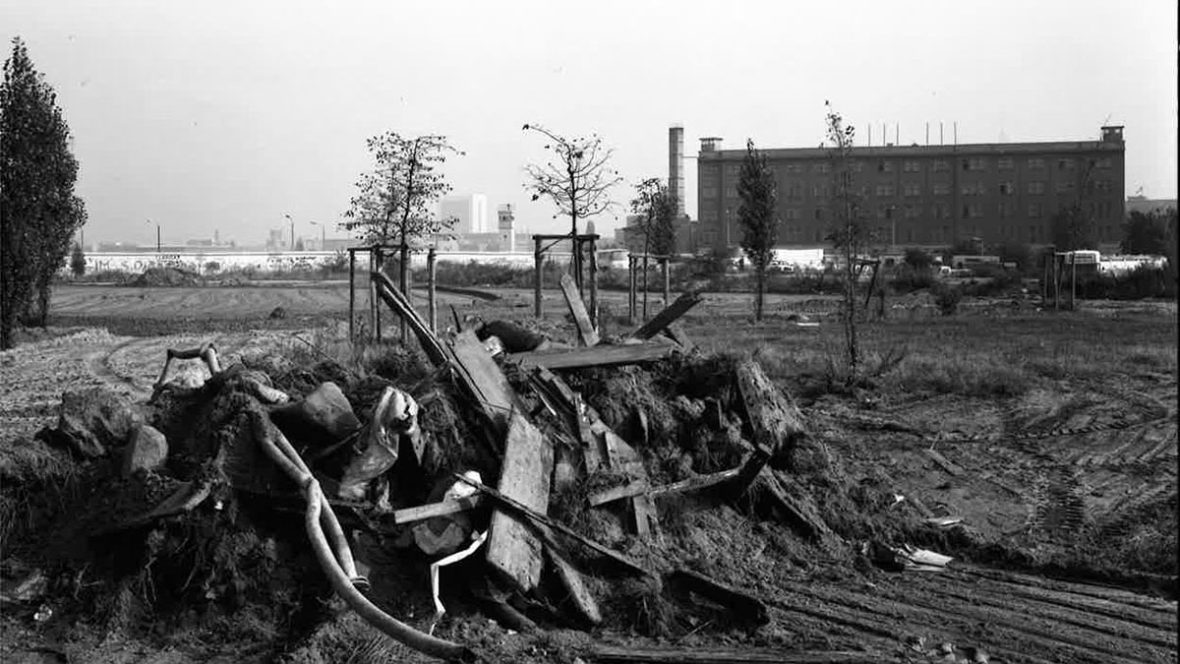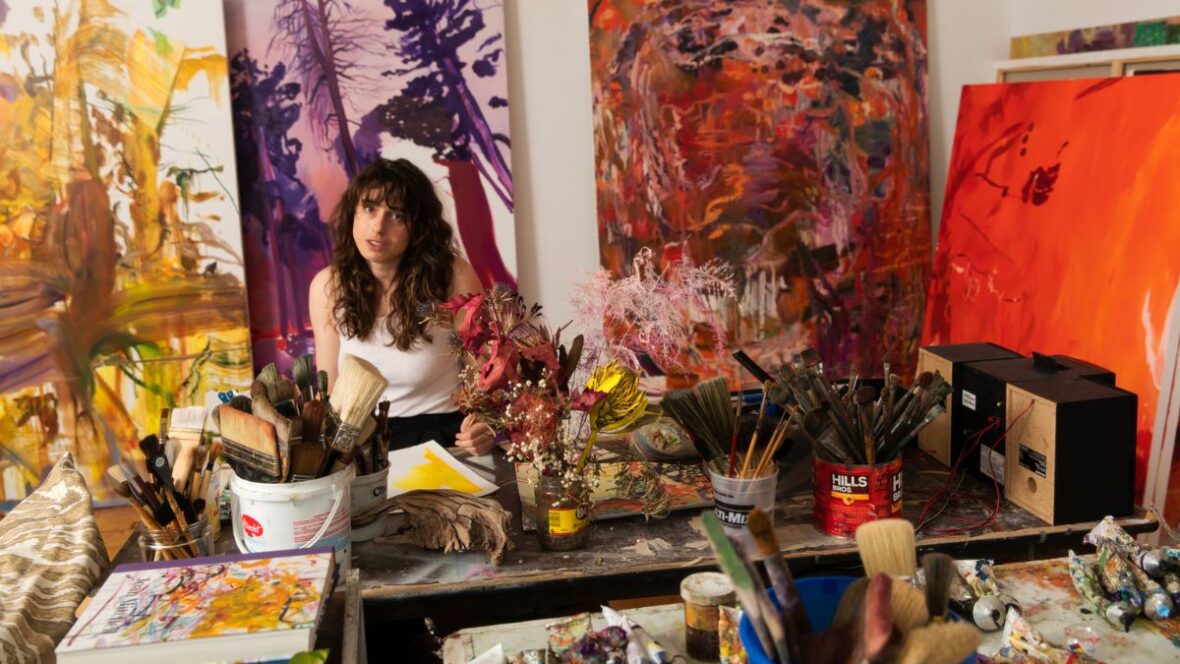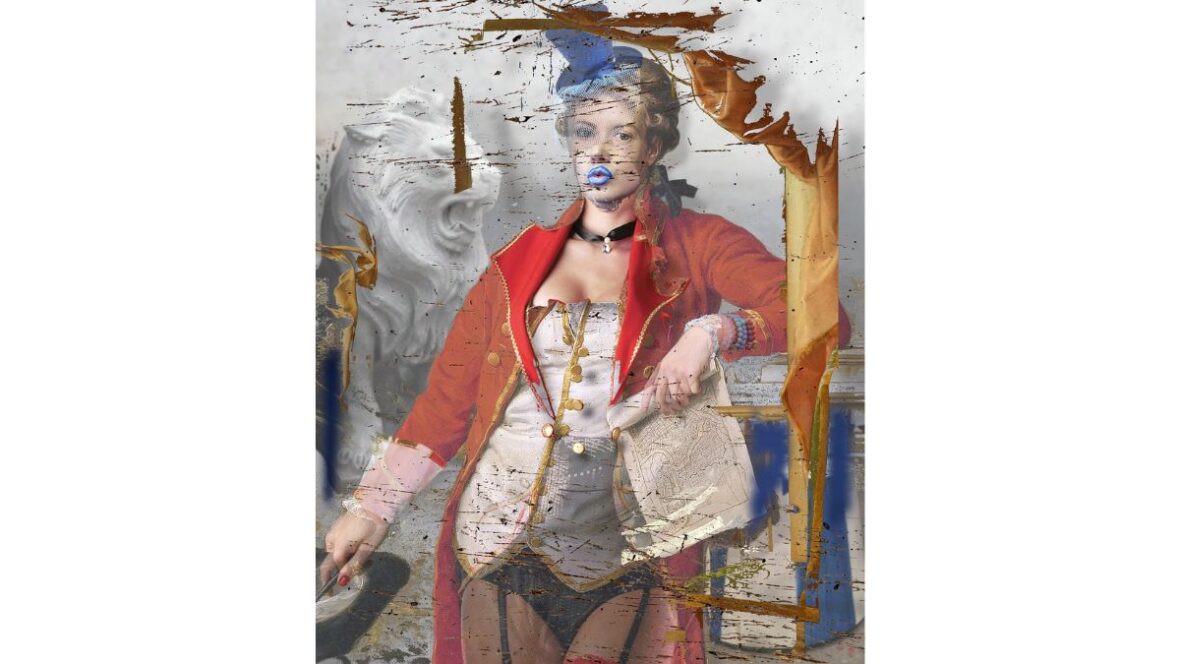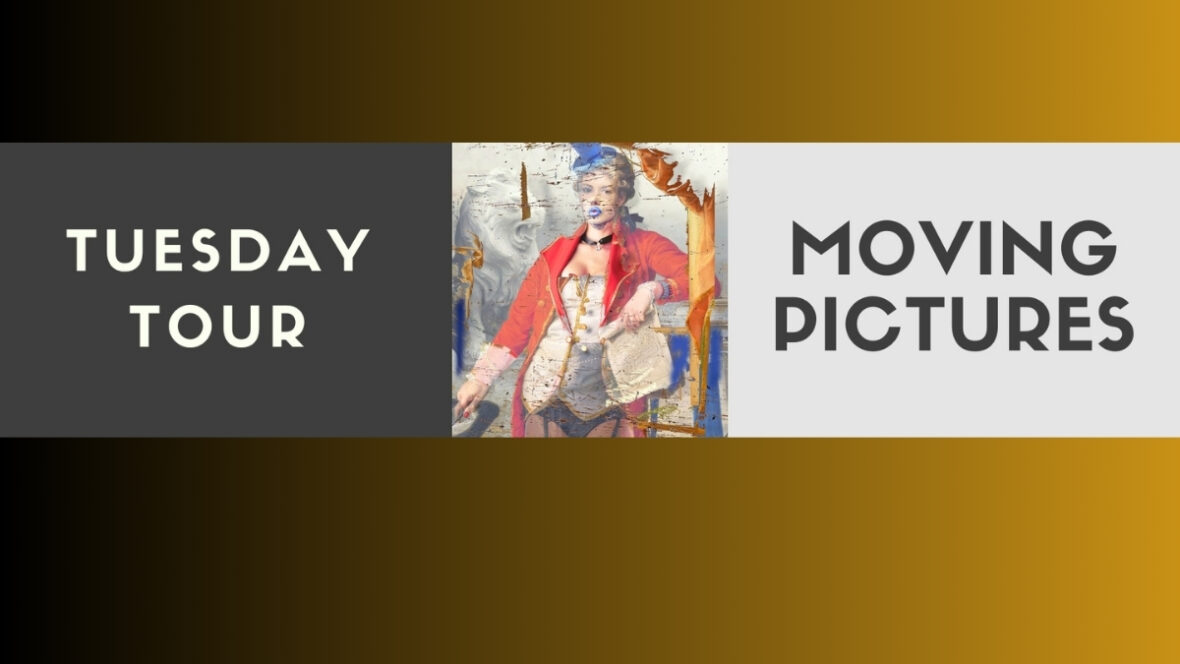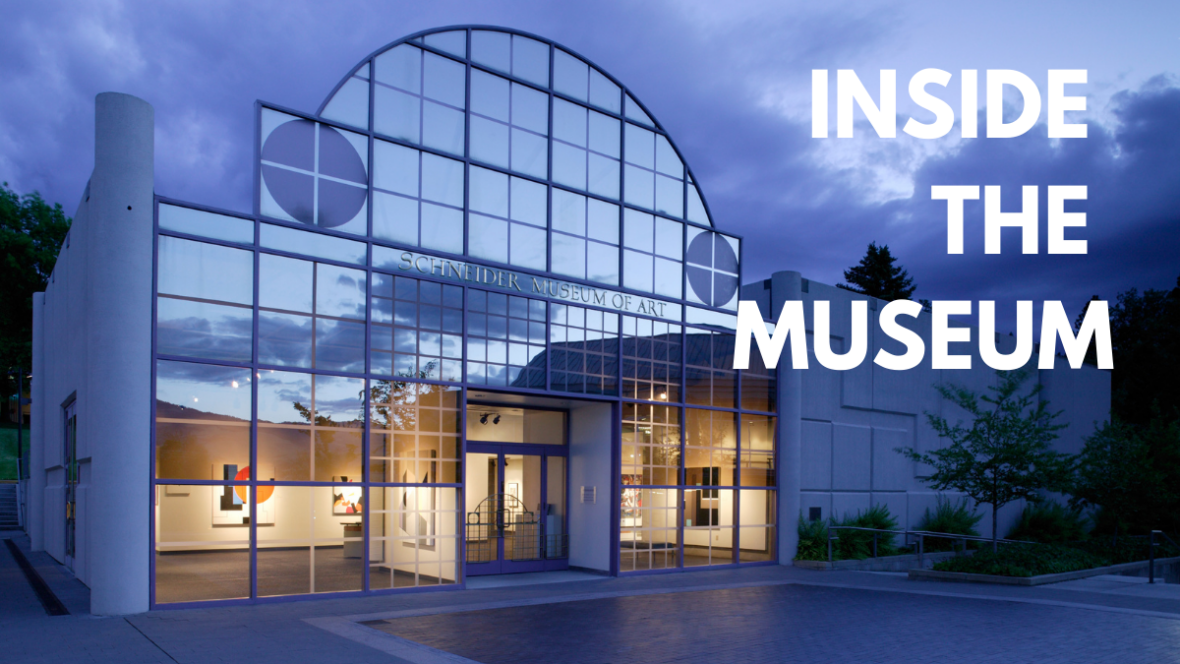Marsha & Michael Burns:
Berlin Photographs
Artist Bios
Michael Burns was born in 1942 in Lubbock, Texas. He holds a B.F.A. in Painting from the University of Washington (1966), and an M.F.A. in painting from the University of Massachusetts (1969). He lives and works with his wife Marsha in Seattle.
Marsha Burns was born in 1945 in Seattle, Washington. She has had many solo photography exhibitions, nationally and internationally. She has been focused on people as the subject of her work for many years. She lives and works with her husband Michael in Seattle.
Exhibition Statement
Michael Burns typically imbues his subject matter with meaning in the act of photographing it, but in his project Berlin 1984 he found a subject that brought meaning to the camera to be sorted and revealed. The topicality of the wall and the risk involved in getting close to it marked a departure from Burns’ previous work, much of which had been a private, somewhat isolated aesthetic response to the medium of photography. Although he continued to work primarily on the formal requirements of a good photograph, Burns sought to qualify and add to his and our knowledge of the wall in the process.
The seemingly neutral description by the camera of the physical reality of the wall was consistent with the artist’s earlier interests. In a project completed just prior to the Berlin work, Burns photographed hundreds of structures in the western United States. Abstracted by their desert surroundings, electric towers, well houses, and burned-out buildings took on the evocative strength of expressive sculpture, their intended purpose becoming secondary, even indiscernible. In Berlin, deep within Communist-ruled East Germany, Burns chose a structure absolutely unambiguous to observers on either side. The wall divided them, philosophically and physically.
Many of us have forgotten the circumstances that led to its construction in August of l961, but we certainly remember President Kennedy standing on an observation platform and delivering his famous sympathetic line: “lch bin ein Berliner.” To the generation that had grown up with the wall, the significance of being a Berliner depends upon which side one lived on. A twenty-five-year-old German living in East Berlin had little chance of leaving his or her country for a vacation or cultural event, even if only across town. A counterpart living in West Berlin was exempt from the military draft, eligible for a higher salary than other West Germans (a kind of hazard pay), and able to travel almost at will, even to the East.
The walled city became an important political and poetic symbol for young intellectuals and writers living in Berlin. Their writing evoking a spectrum of ideas, from Goethe’s divided self to modern man’s isolation and alienation in the absence of viable collective myths. Some writers, such as Peter Schneider, made a career of mythologizing the isolated western half of the city and its inhabitants.
But the poetry did not alter the reality of the wall. It remained a concrete division between two economic and political worlds. Armed guards peered out of watchtowers; spikes buried in the sand threaten potential escapees who would drop from the wall into no-man’s-land. Freedom of personal choice, like the choice of what to photograph, was defined differently on the eastern side.
Burns’s photographs simultaneously dealt with the wall as a political line on a map; a crisp, ominous slice through a two-dimensional photographic frame dividing one half of an ugly post-industrial cityscape from its identical half; and a nonmuseum-bound sculpture that informed and appalled us. The twenty-fifth anniversary of the wall renewed awareness of the anomalous island of West Berlin in East Germany, drawn into sectors at the fall of Nazi Germany. As a graphic element in the photographs, the wall jars with almost every architectural detail around it, except its own watchtowers. And, like good sculpture, its meaning tended to be concentrated around gaps, negative spaces, and modulations. Some of these were familiar: Checkpoint Charlie, the passage through the wall from the American sector; the Brandenburg Gate, strangely isolated at the wall; and the often newsworthy Glienicker Bridge, where spies were exchanged in both movies and reality.
Burns learned about the line dividing the city as he worked. He soon noticed that “the wall” was not always a wall. Sometimes it was a river or canal, sometimes merely a fence; in many places it was two walls, with a forbidden zone between them. In one area it was simply a white line painted on the pavement. The ambiguity of exactly what and where the wall was increased Burns’s uneasiness when approaching it, and he eventually dubbed its various barrier systems as “the technology of paranoia.” His photographs of a barricade designed to contain freedom suggest an interesting set of inside-out metaphoric overtones. Pointing his camera at the German Democratic Republic from the small surrounded enclave of West Berlin, he was in fact outside looking in, caged but free; the gun barrels pointed at Burns were not intended for him or others on the western side, but for escaping countrymen of those holding the guns.
Burns began to see the wall as an admission of failure by the system that raised it, as a monument to the paranoid suspicion of a political ideology that fears its people might abandon it for the ideology (or more abundant consumer goods) next door. Ideas can’t be walled off, of course, and this truth adds a layer of meaning to the photographs. At one point, a break in the wall is necessitated by a stream’s path. The photograph creates a visually rich and suggestive junction of elaborate wires and wire nets with the stream flowing freely to the horizon. Just as the wall becomes a sieve to let the stream through, it couldn’t resist the flow of images and ideas from the West, from television signals carrying “Dallas” and blue-jean commercials to less superficial evidence of Western freedoms.
Burns can be compared to William Henry Jackson, one of the most prolific nineteenth-century documentarians. Like Jackson, Burns was trained as a painter before he came to photography; he is aware of the complex visual conventions that determine how we represent what we see. Like Jackson, he is knowledgeable of the political and social debates of his time, which inform rather than direct his work. And like his predecessor, Burns is concerned with methodically discovering exactly what the camera can accomplish. These discoveries aren’t made in the library or the classroom: they are made alone under the dark cloth, staring at the two-dimensional ground-glass back of a field camera. They occur when decisions that go into making a good picture result in implications beyond the frame.
The photographs of Jackson and other early documentarians of the western United States often illustrated the prevailing social and political attitudes of the day: Manifest Destiny, the racial superiority of whites over native Americans; national pride; the potential mineral and agricultural wealth available to those who would risk settlement. Their representations’ intangible philosophical positions lent a special character to their work and, by extension, to the whole of American photography since.
Dorothea Lange, hired by the government during the Great Depression, carried on the tradition by trying to make visible the modest successes of the Works Progress Administration. And the great magazine photographers of the 1940s and 1950s Walker Evans and Margaret Bourke-White designed their pictures to precisely amplify and validate story lines.
Burns is clearly within this tradition. He chose a subject that few of us had seen photographed so comprehensively, let alone experienced firsthand, but which was immediately recognizable as a flash point between the two most important political powers on the planet. Jackson used the generic railroad, Dorothea Lange the nameless highway, Walker Evans and Margaret Bourke-White symbolic airplanes and factories. The wall in Burns’s pictures, like the wall in the writings of Berlin poets and novelists, stood for and evoked psychological and social phenomena. But remained the wall, from frame to frame, brutally refusing to be generalized or softened by metaphoric and symbolic advances. It was the presence of the political idea that made it: it intimidated to control.
Burns’ month-long presence up and down the wall made an impression on the East German guards. At one point, Burns stepped over a rise near the barrier in a rural area with his 8″ x 10″ camera and tripod on his shoulder. A flurry of activity in the East German guard tower ensued, and a number of jeeps carrying soldiers with weapons at the ready drove up. As he continued to work, Burns realized he had caused undue alarm by repeatedly aiming his pistol like light meter at the guard tower. He made the exposure and left. On another occasion he set up his camera near a crossing point just over the white line indicating the border. Two East German armed guards approached, kicking his tripod while he was under the dark cloth. It occurred to him that they might not believe he was an artist: spies carry cameras. The bigger the camera, perhaps the more important the mission. He moved back over the line. Almost without exception, he was being photographed with telephoto lenses from the other side as he worked. His face and camera have now entered the records of the technology of paranoia.
Artists
Marsha Burns
Michael Burns
